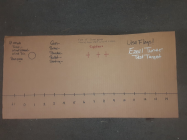Glad I can add to the mysteries . I really wish I could have accurate explanations for a lot of the effects and non-effects I find with my testing and I probably could pull it off if I had the means to do so. If you know what the next Powerball numbers are going to be, please let me know and I’m sure the winnings would go a long way in finding explanations . For now, I’ll stick to the practical side of testing and what I’ve learned so far. Without any other further test data and combining my testing with Bryan Litz’s testing, my current practical conclusions and associated guidelines are:
1. The rifle has to have a well-tuned initial load developed. In my case, developing the load with the tuner on and screwed all the way on. This could be a key step in the process that delineate my results from Litz’s because his rifles were not well-tuned prior to turning the tuner.
2. Record all available atmospherics during all shooting with the tuner. This will enable an analysis of the impact of those variables on tune.
3. Shoot the sine wave test and examine closely the group shapes, sizes, and POI.
4. Set the tuner in the middle of a great “tune window” where group shape, size, and POI are very similar and would be considered a good competitive tune.
5. Turn the tuner when atmospherics indicate based on the atmospheric and group data that you have tracked. Examine whether the tune window has possibly shifted in accordance to variations in atmospherics.
As of right now, this seems to be one effective practical method to use the tuner to regain tune. The method is especially useful when preloading for matches where you cannot change your ammo characteristics (e.g., powder charge, seating). As I continue to test more with various different types of tuners in various atmospheric conditions with different barrel contours and chamberings, the guidelines may change but thus far, this is what the data is telling me.











